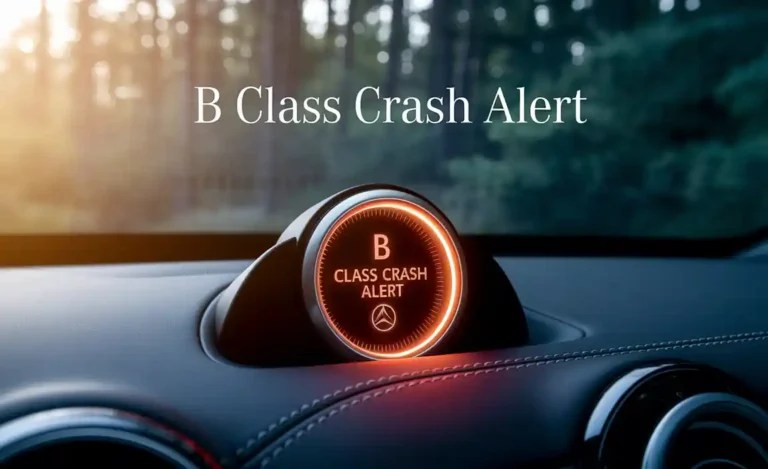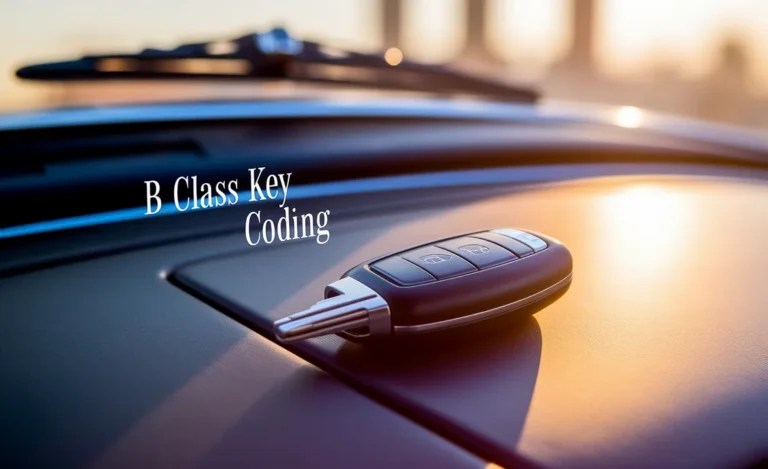B Class Engine Options: Ultimate Performance Power
The Mercedes-Benz B-Class offers a range of engine options designed to balance efficiency and spirited performance. From responsive gasoline engines for everyday driving to robust diesel variants offering excellent fuel economy, understanding these options helps you choose the perfect B-Class for your needs. Explore the power, efficiency, and unique characteristics of each B-Class engine to unlock ultimate performance.
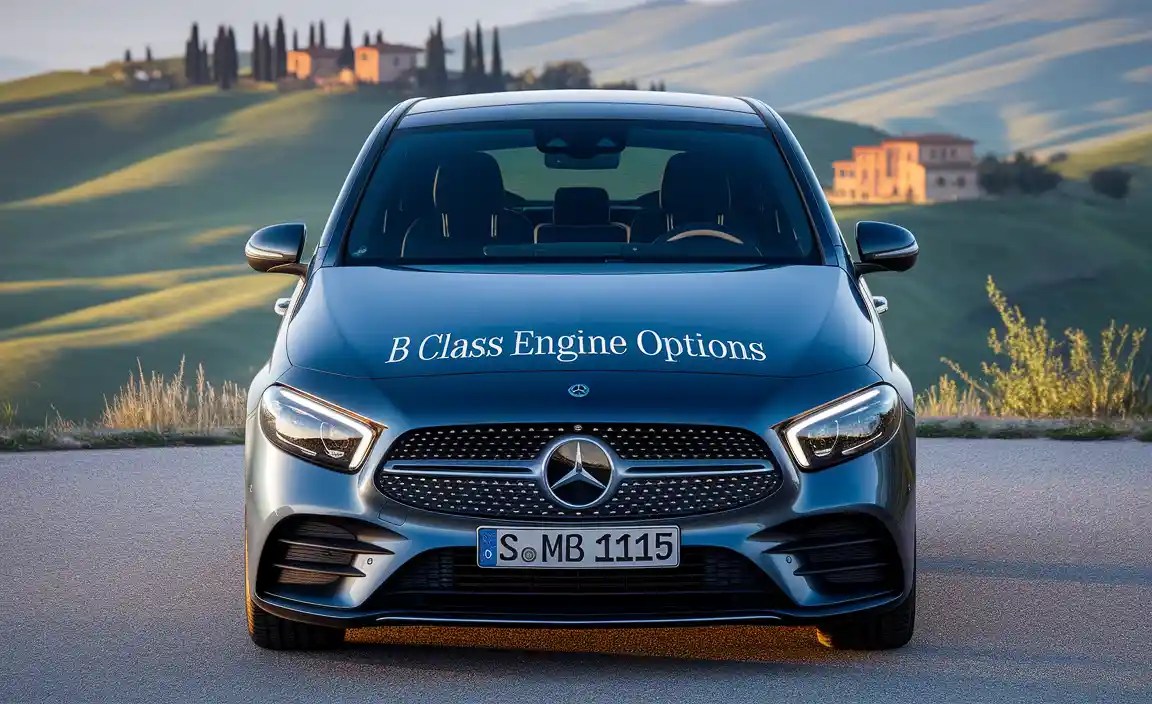
Welcome to MercedesBlue, where we demystify the sophisticated world of Mercedes-Benz. Today, we’re diving deep into the heart of the B-Class: its engine options. You might be wondering which B-Class engine is the right fit for your driving style, or perhaps you’re curious about how these engines deliver that signature Mercedes-Benz blend of comfort and dynamism. It can feel a bit complex with so many choices, but don’t worry. We’ll break down each B-Class engine option, explaining what makes them tick and helping you find the ultimate performance and efficiency for your needs. Let’s explore the power under the hood!
Understanding B Class Engine Options: A Performance Powerhouse
The Mercedes-Benz B-Class, a versatile compact MPV, has always aimed to blend practicality with that unmistakable Mercedes-Benz driving experience. A crucial part of this experience is, of course, the engine. Over its production run, the B-Class has seen various engine configurations, each tailored to different driving priorities, from fuel efficiency to brisk acceleration. For enthusiasts and everyday drivers alike, grasping these B Class engine options is key to understanding the model’s capabilities and choosing the perfect variant.
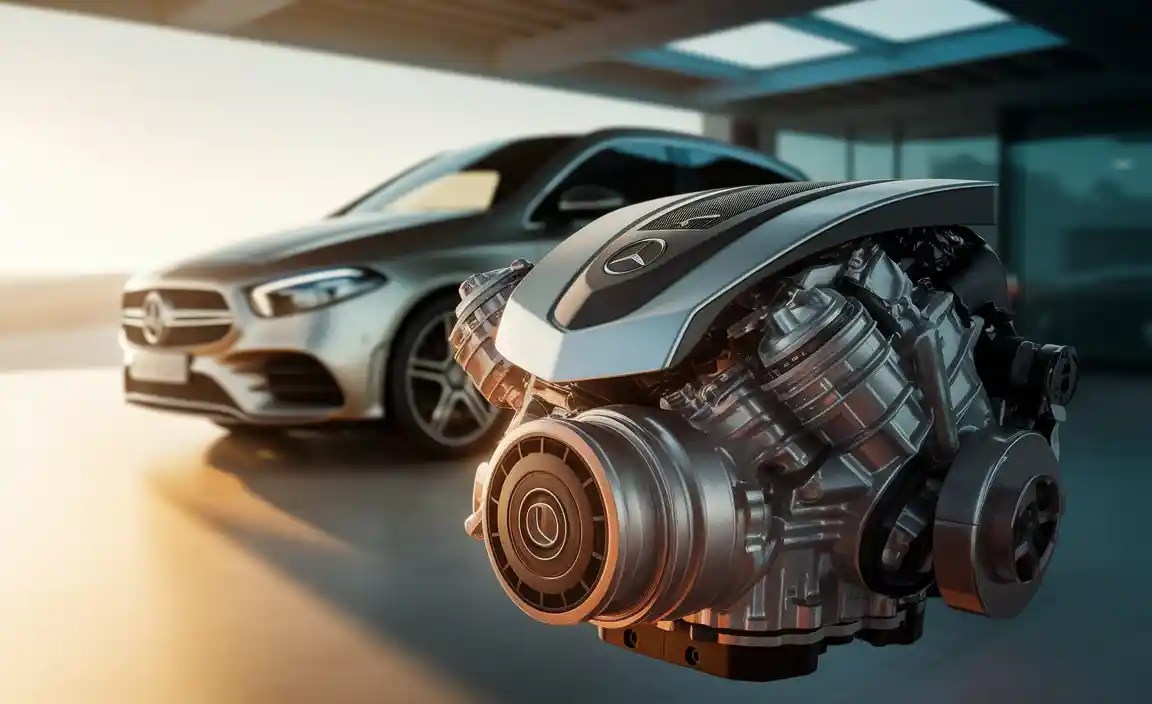
When we talk about “ultimate performance power” in the context of the B-Class, it’s important to frame it within its segment. While not an AMG model designed for track days, the B-Class engines offer a compelling mix of responsiveness, refinement, and efficiency that makes daily driving enjoyable and capable. Whether you’re navigating city streets, embarking on a long highway journey, or seeking a responsive feel when merging into traffic, the right B Class engine option can make all the difference.
Let’s explore the diverse range of B Class engine options that have graced this popular model, focusing on what each brings to the table in terms of performance, economy, and driving character. We’ll shed light on the designations, the technology, and how to interpret their specifications to make an informed decision.
The Evolution of B-Class Powerplants
Mercedes-Benz has a long-standing tradition of engineering excellence, and the B-Class engines are no exception. Designed to meet stringent emissions standards while delivering satisfying performance, these powertrains have evolved significantly. Early models featured more traditional gasoline and diesel engines, while later generations incorporated advanced technologies like turbocharging, direct injection, and hybrid systems to enhance both power output and fuel efficiency.
Understanding the engine codes and designations is a good starting point. For instance, ‘CDI’ typically denoted a diesel engine, while ‘CGI’ indicated a gasoline engine with direct injection. In more recent B-Class models, these have been replaced by simpler numerical designations ([e.g., B 180, B 200, B 220]) often combined with ‘d’ for diesel or specific performance indicators. The key takeaway is that Mercedes-Benz consistently aims to optimize power delivery and efficiency across its lineup.
Gasoline Engine Options in the B-Class
The gasoline engines found in the B-Class are engineered for a smooth, refined, and responsive driving experience, making them ideal for city dwellers and those who appreciate a quiet cabin. These engines typically focus on providing ample power for everyday driving needs without compromising on fuel economy.
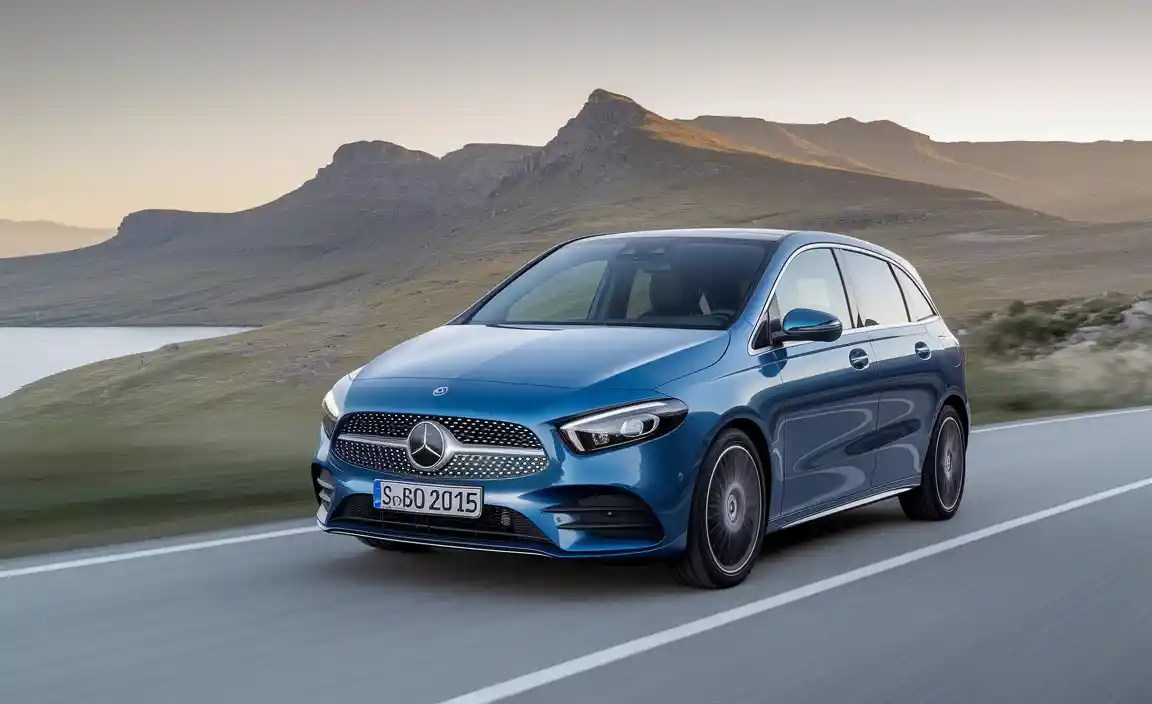
The “B 180” Gasoline Engine
Often serving as an entry-level option, the B 180 gasoline engine is designed for efficiency and everyday usability. While it might not be the most powerful in the range, it offers a competent performance for commuting and light driving duties. These engines are known for their quiet operation and reasonable fuel consumption, especially around town. They are typically turbocharged, providing a decent amount of torque for their size, which makes merging and overtaking in moderate traffic quite manageable.
The “B 200” Gasoline Engine
Stepping up, the B 200 gasoline engine generally offers a bit more power and torque compared to the B 180. This translates into a more spirited driving experience, with quicker acceleration and a more relaxed feel during highway cruising. The increased displacement or tuning in the B 200 allows for a greater reserve of power, making it a popular choice for those who want a bit more oomph without venturing into significantly higher fuel consumption figures. It strikes a nice balance between performance and economy.
The “B 220” and Higher Gasoline Engines
In some B-Class generations, you might find even more potent gasoline options like the B 220 or B 250. These engines typically boast larger displacements, higher turbocharger boost pressures, or more sophisticated engine management systems. The result is a noticeable increase in horsepower and torque, offering a more dynamic and engaging drive. For drivers who prioritize responsive acceleration and enjoy a more potent feel when pressing the pedal, these higher-tier gasoline engines are excellent choices. They deliver performance that can surprise many, making the B-Class feel more substantial on the road.
Diesel Engine Options in the B-Class
The diesel engines have been a cornerstone of the B-Class range, particularly in European markets, celebrated for their exceptional fuel efficiency and strong torque characteristics. These engines are the workhorses, offering long-distance cruising comfort and substantial savings at the fuel pump.
The “B 180 d” Diesel Engine
The B 180 d represents the entry point into the B-Class diesel offerings. This engine is a marvel of modern engineering, delivering impressive fuel economy without sacrificing the torque needed for confident driving. It’s perfect for drivers who face a daily commute or frequently travel long distances. The inherent nature of diesel engines provides excellent low-end torque, meaning you’ll feel a good pull from a standstill and when accelerating from lower speeds, making it feel more potent than its horsepower rating might suggest.
The “B 200 d” Diesel Engine
The B 200 d typically offers a step up in performance from the B 180 d, with more horsepower and torque. This makes it a more versatile option, providing a more engaging driving experience while still maintaining excellent fuel efficiency. The extra power is noticeable during overtaking maneuvers and when carrying a heavier load. It’s a fantastic compromise for those who want the benefits of diesel economy but also desire a more robust performance for varied driving conditions.
The “B 220 d” and Higher Diesel Engines
For those seeking the most potent diesel performance in the B-Class, variants like the B 220 d or B 250 d deliver. These engines combine robust power output with the inherent efficiency of diesel technology. They are ideal for drivers who cover significant mileage and want a vehicle that feels powerful and substantial on the road, even when fully loaded or tackling challenging terrain. The torque from these engines is exhilarating, providing effortless acceleration and a true sense of command.
Alternative and Performance-Oriented Variants
Beyond the standard gasoline and diesel engines, Mercedes-Benz has occasionally offered more specialized B-Class variants aimed at specific performance or efficiency niches.
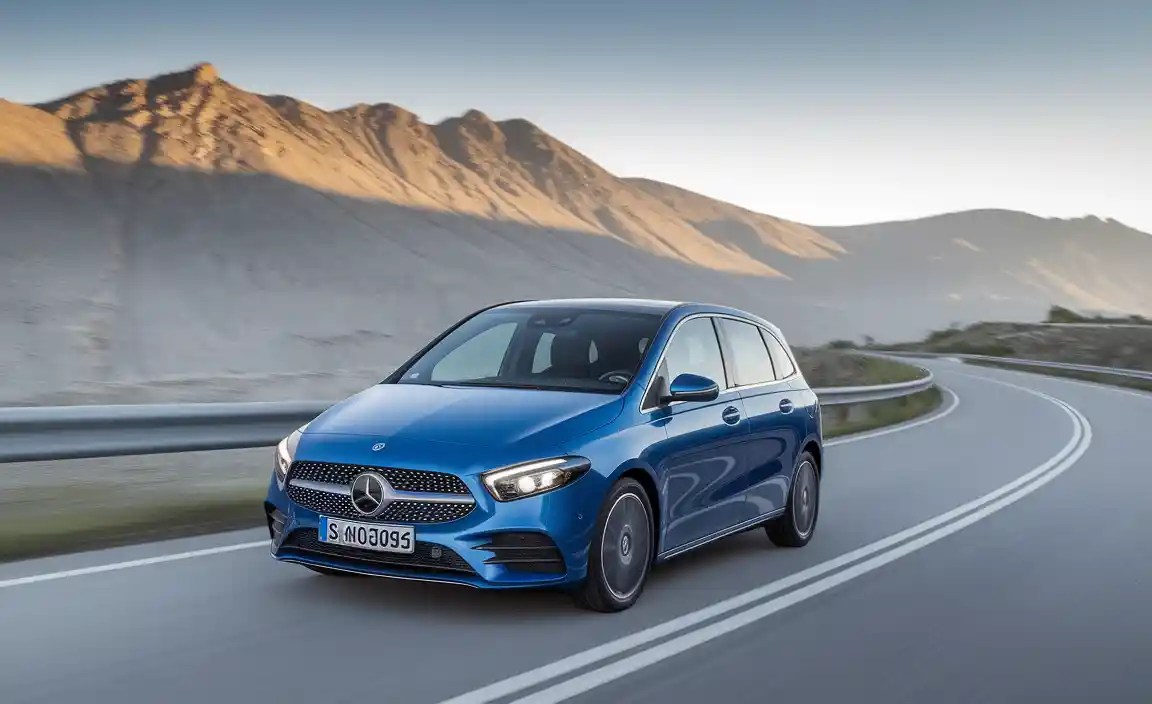
The B-Class Electric Drive (e.g., B 250 e)
In certain markets, Mercedes-Benz introduced the B-Class Electric Drive (later designated as the B 250 e). This all-electric variant showcased the brand’s commitment to electromobility. While focused on zero emissions, electric powertrains offer instant torque and smooth, quiet acceleration, providing a unique form of “performance.” The immediate power delivery from the electric motor can feel surprisingly brisk, making it a fun and efficient option for urban driving. For more information on electric vehicle technology, resources from the U.S. Department of Energy’s Alternative Fuels Data Center (AFDC) can be very informative.
Special Editions and AMG-Lite Models
While full-blown AMG versions of the B-Class are rare or non-existent in many key markets, Mercedes-Benz sometimes releases sportier trims or packages for the standard B-Class. These might include tweaked engine maps, sport suspension, and enhanced exhaust systems, all contributing to a more dynamic feel. These don’t necessarily represent a fundamentally different “engine option” but rather a performance-oriented configuration of an existing engine, designed to give a sportier edge.
Key Technologies Enhancing B-Class Engine Performance
Mercedes-Benz employs a suite of cutting-edge technologies across its B-Class engine range to maximize performance, efficiency, and emissions compliance. Understanding these innovations can deepen your appreciation for the engineering prowess behind these vehicles.
- Turbocharging: Most modern B-Class engines, both gasoline and diesel, utilize turbocharging. This technology uses exhaust gases to spin a turbine, which in turn forces more air into the engine’s cylinders. More air means more fuel can be burned, leading to increased power and torque from a smaller, more efficient engine.
- Direct Injection: This system precisely injects fuel directly into the combustion chamber, rather than into the intake manifold. This offers better control over the combustion process, leading to improved fuel efficiency, cleaner emissions, and a more responsive throttle.
- Variable Valve Timing: Technologies that adjust the timing of the intake and exhaust valves allow the engine to breathe more efficiently across a wider range of speeds and loads. This optimizes power delivery and fuel economy.
- Start/Stop Functionality: To reduce fuel consumption and emissions in urban driving, many B-Class models feature an automatic engine start/stop system. It shuts down the engine when the vehicle is stationary (e.g., at traffic lights) and restarts it when the driver releases the brake or engages the clutch.
- Eco Mode / Driving Modes: Selectable driving modes (like Eco, Comfort, Sport) allow the driver to tailor the engine’s response, transmission shift points, and other vehicle parameters to preference. The Eco mode typically prioritizes fuel efficiency by softening throttle response and optimizing gear shifts.
Comparing B Class Engine Options: Performance vs. Economy
Choosing the right B Class engine option boils down to balancing your priorities: do you lean more towards spirited performance, or is maximizing fuel economy your primary concern? Let’s break down how the different engine types typically stack up.
Performance Characteristics
Gasoline Engines: Generally offer zippier, more responsive acceleration, especially at higher RPMs. They tend to be smoother and quieter in operation. For drivers who enjoy more dynamic driving and quicker throttle response, a gasoline engine might be preferred.
Diesel Engines: Excel in low-end torque. This means they feel strong and effortless when pulling away from a stop or accelerating from lower speeds. While they might not rev as high or as freely as gasoline engines, their pull can feel very potent and make for relaxed cruising. They are often quieter than older diesels but can have a more distinct note under load.
Electric Engines: Offer an entirely different performance profile, characterized by instant, silent torque that provides exhilarating acceleration from a standstill. It’s a smooth, linear power delivery that feels very immediate.
Fuel Economy and Efficiency Metrics
Gasoline Engines: Historically have lower MPG ratings than comparable diesel engines, especially on the highway. However, modern turbocharged gasoline direct-injection engines have significantly closed this gap, offering respectable efficiency for their performance.
Diesel Engines: Typically offer superior fuel economy, particularly on longer journeys. Their higher energy density per gallon/liter and inherent thermal efficiency allow for more miles per tank, making them a cost-effective choice for high-mileage drivers. For detailed information on fuel types and efficiency, the U.S. EPA’s FuelEconomy.gov is an excellent resource.
Electric Engines: Offer the ultimate in running cost efficiency, with electricity typically being cheaper per mile than gasoline or diesel. They also produce zero tailpipe emissions, contributing to cleaner air in urban environments.
Typical B-Class Engine Specifications Comparison Table
This table provides a general overview of what you might expect from various B-Class engine options. Specifications can vary significantly by model year, market, and specific engine tune.
| Engine Designation (Example) | Engine Type | Typical Horsepower Range (approx.) | Typical Torque Range (approx.) | Key Strength | Primary Use Case |
|---|---|---|---|---|---|
| B 180 (Gasoline) | Turbocharged Gasoline | 120 – 130 hp | 180 – 200 Nm | Good fuel economy for gasoline, smooth operation | City driving, commuting |
| B 200 (Gasoline) | Turbocharged Gasoline | 150 – 160 hp | 250 – 270 Nm | Balanced performance and efficiency | All-around driving, light performance feel |
| B 220 (Gasoline) | Turbocharged Gasoline | 170 – 180 hp | 300+ Nm | Stronger acceleration, more torque | Enthusiastic driving, highway confidence |
| B 180 d (Diesel) | Turbocharged Diesel | 105 – 115 hp | 250 – 280 Nm | Excellent fuel economy, high torque at low RPM | Long commutes, highway cruising |
| B 200 d (Diesel) | Turbocharged Diesel | 135 – 150 hp | 300 – 330 Nm | Great blend of diesel economy and performance | Versatile driving, good for varied conditions |
| B 220 d (Diesel) | Turbocharged Diesel | 175 – 190 hp | 350 – 400 Nm | Very strong torque, effortless performance | Towing (if applicable), loaded travel, brisk pace |
| B 250 e (Electric) | Electric Motor | 170 – 180 hp (equivalent) | 340 – 370 Nm (instant) | Instant torque, zero emissions, quiet operation | Urban mobility, eco-conscious driving |
Factors Beyond Horsepower
While horsepower figures are impressive, torque is often a better indicator of how a car “feels” in everyday driving. High torque at low RPMs means a car will accelerate briskly without needing to be worked hard. Transmission choice also plays a significant role; a well-programmed automatic or dual-clutch transmission can make a smaller engine feel more powerful, while a manual gearbox offers driver engagement.
Selecting the Best B Class Engine Option for You
Deciding which B Class engine option is “best” is a personal journey, dependent on your lifestyle, driving habits, and preferences. Let’s walk through some scenarios to help you pinpoint the ideal choice.
For the Daily Commuter
If your driving primarily involves navigating city traffic and shorter commutes, a smaller, efficient gasoline engine like the B 180 or B 200, or a diesel like the B 180 d, would be excellent choices. The smaller gasoline engines offer smooth, quiet operation and good fuel economy in stop-and-go traffic. The diesel provides superior MPG even in urban settings and offers useful torque for easy starts and merges. If your commute is short and you have access to charging, the B 250 e offers the ultimate in running cost efficiency and quietness.
For the Highway Traveler
Frequent long-distance drivers will likely benefit most from the diesel variants, such as the B 200 d or B 220 d. Their superior fuel economy means fewer stops at the pump, and their strong torque makes for relaxed, effortless highway cruising. The B 220 d, in particular, offers substantial power reserves for overtaking and maintaining speed uphill. A larger gasoline engine like the B 220 or B 250 can also be a good option if you prefer gasoline power and don’t mind slightly more frequent refueling.
For the Enthusiast Driver
Even within the B-Class, there are options for those who enjoy a more dynamic driving experience. Look for the higher-output gasoline engines like the B 220 or B 250, which offer more responsive acceleration and a sportier feel. Paired with the optional sports suspension or AMG Line package, these can provide a surprisingly engaging drive. While not typically a performance benchmark, these engines allow the B-Class to feel agile and fun on twisty roads.
For the Eco-Conscious Driver
The B 250 e electric model is the clear winner for zero-emission driving. However, if an electric vehicle isn’t practical, modern diesel engines offer a great way to reduce your carbon footprint and fuel costs due to their inherent efficiency. For gasoline enthusiasts, choosing a smaller turbocharged engine and driving it smoothly in Eco mode will yield the best environmental and economic results.

